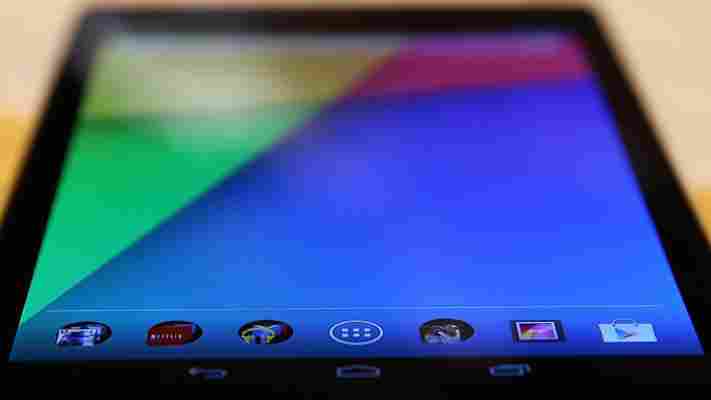2013 was the most intense year in the tablet war yet. Amazon and Google kept their prices low, Apple and Samsung responded accordingly, and Microsoft showed it was here to stay. Here’s our take on what happened this year and what it all means.

There are, naturally, other companies that build and sell tablets. Not only did 2013 remind us that the tablet market is large enough for many small players to fight it out, but even retailers designed and sold their own tablets in the hopes to make a quick buck. The bigger battle, however, is taking place between the big five, as each are putting in more and more resources to win over consumers.
Tablet buyers thus end up supporting Apple’s iOS ecosystem, the Android ecosystem (in its many variations), or Microsoft’s Windows 8 ecosystem. 2013 showed us that even those who want to pick one platform and stick with it, end up using more than just one at home, at work, and on the go.
Without further ado, let’s take a look at the bigger picture of what each company did, and tried to do, this year.
In October, Apple introduced the fifth-generation iPad , called the iPad Air , and a second-generation iPad Mini that comes with a Retina Display . The iPad Air went on sale on November 1, while the second generation iPad Mini was released on November 12.
Apple kept its pricing structure the same for the iPad and actually increased it for the iPad mini. The company showed once again that it had no problems with being beaten on price by the competition: it was still perfectly happy with losing share in exchange for keeping its profit margins.
This is a strategy Apple has employed for most of its products, with mixed results. That tablet market is so massive, however, that trying to figure out whether the company is doing the smart thing right now is frankly impossible. While the latest iPad sales numbers aren’t available yet , we do know the demand is there .
Having had decent success with the original Nexus 7 and the 3G-refreshed Nexus 7 last year, in July Google announced the 2013 model of the Nexus 7 . An LTE variant was also unveiled and arrived in September .
Curiously, the Nexus 10 was not refreshed this year, although rumors suggested that it would be. It’s still not clear how much the company wants to emphasize the larger tablet offering. Google was, however, very eager in pushing new Android releases, announcing both 4.3 Jelly Bean (along with the Nexus 7) and 4.4 KitKat (along with the Nexus 5) this year.
Again we don’t have proper sales numbers yet, but the Nexus line seems to be gaining a lot of attention. Google showed in 2013 that it would do everything it could to ensure Android would become as popular on tablets as it already is on smartphones.
While Google has been pushing its Nexus brand hard, it’s still no match for Samsung, based on market share at least. The South Korean company continued to dominate Android tablets, and kept its second place position in the tablet market overall.
In April, Samsung revealed the 7-inch Galaxy Tab 3 . In June, it followed up with 8-inch and 10.1-inch Galaxy Tab 3 tablets as well as the 10.1-inch ATIV Tab 3 running Windows 8.
In September, it also revealed the Galaxy Note 10.1 2014 Edition . While Samsung has been trying to simplify its tablet line, it is still difficult to keep track of, given the overlapping smartphone, phablet, tablet, and laptop brands.
Speaking of brands, Amazon continued onwards with its Kindle and Kindle Fire approach. In September 2013, the company launched 7-inch and 8.9-inch versions of the Kindle Fire HDX .
The same month, Amazon also announced the second-generation Kindle Paperwhite. In October 2013, the company refreshed the 7-inch Kindle Fire HD with a new case and price reduction.
Amazon is starting to suffer the same problem as Samsung: offering just a few too many models of its tablets, leading to consumer confusion. Yet as is typical with the retailer, it will simply continue to slash prices and replace older models as it sees fit, sharing absolutely nothing regarding sales figures.
Amazon’s Seattle rival may have been pushing tablets for ages, but the Surface line is still very much in its infancy. The company unveiled its Surface 2 and Surface Pro 2 refresh in September.
Microsoft continued to push its vision of a one-size-fits-all approach in the tablet space. Reviews were mixed for both devices , although there was certainly a notable improvement observed all across the board.
Microsoft naturally has a long way to go, especially on the software side. Talk of merging operating systems and app stores suggests there’s a very long-term play in the works. Throw in the acquisition of Nokia, and it’s obvious that Windows will play a major role on tablets.
In 2013, prices didn’t drop as much as they did in 2012. By and large, tablet makers were more than happy to refresh their offerings without trying to significantly undercut each other further than they already have.
Instead, they continued to invest in their respective ecosystems. Each of the big five has its own devices and accompanying services, and each are still trying to figure out how to best one-up each other: nobody’s strategy has been set in stone.
Tablets are expected to outship mobile PCs this year , and it won’t be long till they outsell all other types of computers too. They’re simply devices that offer as much as, if not more than, traditional PCs do for most people, at much lower prices.
While in 2012 it appeared that the battle couldn’t last, 2013 showed that none of the five are going to go down easy. Even though in terms of market share, Android seems to have won , 2013 wasn’t the year when company winners and losers were decided.
Don’t miss our other 2013 review articles .
Image credits: Justin Sullivan/Getty Images ; Spencer Platt/Getty Images ; Justin Sullivan/Getty Images ; WILL OLIVER/AFP/Getty Images ; Amazon; Spencer Platt/Getty Images
Fujitsu enters the high-end Android smartphone market in Japan with the ARROWS A SoftBank 202F
Fujitsu isn’t the first hardware manufacturer that springs to mind when debating high-end Android smartphones, but the company is hoping to change its rather lacklustre reputation with the ‘ARROWS A SoftBank 202F’ in Japan.

The device sports a 5-inch, 1080p display and a hefty 3,000 mAh battery, the latter of which is a huge improvement on the HTC One and Samsung Galaxy S4. In fact, very few devices surpass this size at moment – the Galaxy Note II and Galaxy Mega spring to mind – and only because they have a much larger body to stow it in.
Fujitsu claims that the handset will last over two days on a single charge – presumably through consistent use, and not just being left on standby – due in part to the company’s energy-saving Human Centric Engine. That’s bound to drop off rather rapidly depending on the applications that the user has running, but it’s a promising sign nonetheless.
The ARROWS A SoftBank 202F runs on a 1.7 GHz quad-core Snapdragon 600 processor, although Fujitsu has emphasized that some of the cores will be put in stasis from time to time to help conserve power.
The handset also comes equipped with a 13.1-megapixel rear-facing camera, with Fujitsu’s own ‘Perfect Tuning’ software to help users snap clear, detailed images with very little effort. There’s also HDR functionality out of the box, as well as a ‘Zero Shutter Capture’ mode for reducing lag in low-light conditions.
Other details are scarce, although Fujitsu confirmed that the handset boasts 64GB of internal storage as standard – 52GB of which is actually available to the consumer – and is also mildly water-resistant and dust-resistant. The ARROWS A SoftBank 202F will be sold in Japan through SoftBank retailers (no surprises there) from June 28 in four colors: Grace Blue, Pink, Black and White.
There’s no word on an international release, although the SoftBank partnership suggests that it won’t be launched in its current form outside of Japan. Nevertheless, it’s admirable to see another hardware manufacturer taking a stab at the high-end Android space, adding some variety to the near endless deluge of Samsung handsets flooding the market recently.
Image Credit: Koichi Kamoshida/Getty Images
Microsoft Points are finally scrapped on the Xbox 360 in favor of real money
The long-awaited transition from Microsoft Points to real world currency has finally arrived. An update for the Xbox 360 rolling out today will officially retire the virtual currency, giving players the ability to buy new content with a more substantial, tangible value.

For those with some Microsoft Points still left over in their account, or with a Points card lying around somewhere, never fear. These will be converted to their equivalent value in the player’s local currency.
The final cut-off point for using converted Microsoft Points is June 1, 2015. That should be plenty of time for players to use up their allowance, particularly with the launch of the Xbox One looming on the horizon . Few will miss Microsoft Points – performing the mental acrobatics to know how much you were actually spending was always a bit of a pain.
Long live real money.
➤ Microsoft (via Engadget )
Image Credit: Microsoft
